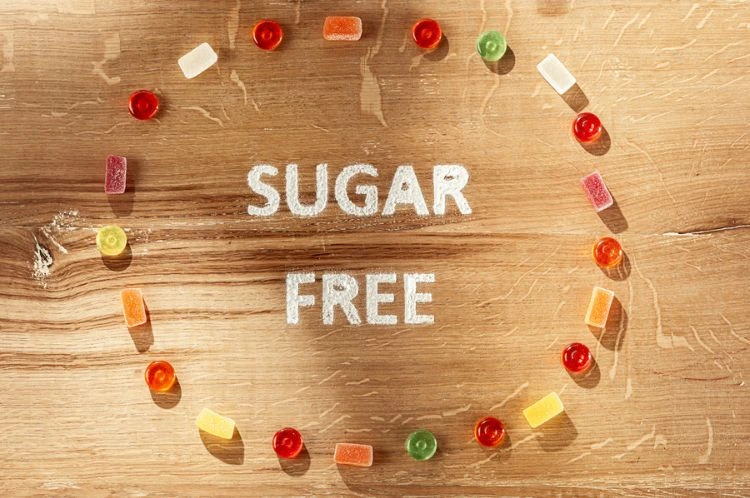Our body needs sugar, true! What it does not need is added sugar.
The holiday season is a time for celebration, joy, and indulgence. From festive cookies to sugary drinks, the abundance of treats can often lead to excessive sugar consumption. While these moments bring happiness, the aftermath can be detrimental to your health. Overindulging in sugar treats can impact both physical and mental well-being, leaving you feeling lethargic and unbalanced. A post-holiday sugar detox offers a fresh start to the new year, helping to reset your body and restore energy levels. This comprehensive guide provides insights into the risks of excess sugar, symptoms of withdrawal, and practical tips to embrace a healthier lifestyle.
What is Sugar Detox and Why is it Necessary?
A sugar detox involves eliminating or significantly reducing added sugars from your diet to give your body time to recover and recalibrate.
An average American consumes between 25-30 teaspoons worth of sugar, which is significantly more than the limit of 6-19 teaspoons. All the food items that are related to food related addiction have excessive sugar. As Nicole Richie said “Sugar is a silent killer”. It’s the actual sweet poison that we consume on a regular basis. This excess consumption of sugar can lead to a number of physical and mental problems:
Physical Risks:
- Weight Gain: High sugar intake contributes to excess calorie consumption, leading to weight gain and obesity.
- Type 2 Diabetes: Overconsumption of sugar increases insulin resistance, raising the risk of diabetes.
- Heart Disease: Studies show that added sugars elevate triglycerides and increase the risk of heart disease.
- Fatty Liver Disease: Excess sugar, especially fructose, can lead to fat buildup in the liver, which can lead to health problems like high blood pressure and stroke.
Mental Risks:
- Mood Swings: Sugar disrupts neurotransmitter balance, leading to emotional highs and lows.
- Anxiety and Depression: Fluctuating blood sugar levels can exacerbate symptoms of anxiety and depression.
- Cognitive Decline: Over time, excessive sugar intake may impair memory and focus.
Here is the sugar consumption data for each age group:
|
Age Group |
Recommended Sugar Intake |
|
|
Male |
Female |
|
| Children (2-3 years) |
Up to 25g (6 tsp) |
Up to 25g (6 tsp) |
|
Children (4-8 years) |
Up to 30g (7.5 tsp) |
Up to 25g (6 tsp) |
|
Pre-teens (9-13 years) |
Up to 36g (9 tsp) |
Up to 25g (6 tsp) |
| Teens (14-18 years) |
Up to 36g (9 tsp) |
Up to 25g (6 tsp) |
| Adults (19+ years) |
Up to 36g (9 tsp) |
Up to 25g (6 tsp) |
| Older Adults (65+ years) |
Up to 30g (7.5 tsp) |
Up to 25g (6 tsp) |
Common Symptoms of Sugar Detox
Eliminating sugar from our diet is not as simple as it sounds. As we stop consuming sugar, changes occur in our body on both physical and mental levels. Here are some of the sugar detox symptoms:
Physical Symptoms

- Headaches
Why It Happens: Sudden sugar withdrawal can cause your brain to experience temporary energy imbalances, leading to headaches.
How to Manage: Stay hydrated, practice deep breathing, and consume magnesium-rich foods like spinach or almonds to ease discomfort. - Nausea
Why It Happens: Sugar withdrawal affects your digestive system, particularly if you’ve relied on sugary foods for quick energy. The body needs time to adapt to nutrient-dense, less processed foods.
How to Manage: Opt for small, frequent meals with whole, unprocessed foods. Ginger tea or peppermint can help soothe nausea. - Fatigue
Why It Happens: Sugar acts as a quick energy source. When you remove it, your body initially struggles to find alternative, sustainable energy sources.
How to Manage: Focus on balanced meals rich in proteins, healthy fats, and complex carbs to provide consistent energy throughout the day. - Digestive Changes
Why It Happens: High sugar intake often disturbs gut health. Detoxing may lead to temporary bloating or irregular bowel movements as your gut microbiome rebalances. How to Manage: Include probiotics like yogurt or kefir and high-fiber foods like oats and leafy greens to support gut health.
Mental Symptoms

- Anxiety
Why It Happens: Sugar stimulates dopamine production, which gives a short-lived feeling of pleasure. During detox, dopamine levels temporarily drop, causing anxiety or restlessness.
How to Manage: Practice mindfulness techniques like meditation or deep breathing exercises to manage anxiety. Physical activity, even light walking, can also help stabilize mood. - Lack of Concentration
Why It Happens: Your brain relies on glucose for energy. During the detox, it may take time for your body to regulate blood sugar levels efficiently, leading to brain fog or difficulty focusing.
How to Manage: Stay hydrated and eat meals with low glycemic index (GI) foods like quinoa, lentils, and vegetables to provide steady energy. - Cravings for Sugary Foods
Why It Happens: Sugar dependency creates strong cravings as the body and brain yearn for the quick energy boost sugar provides.
How to Manage: Distract yourself with activities, chew sugar-free gum, or sip on herbal teas like cinnamon or mint to curb cravings. - Irritability
Why It Happens: Without sugar, the body experiences fluctuating blood sugar levels, which can result in mood swings or irritability.
How to Manage: Pair every meal with a healthy fat or protein to prevent blood sugar crashes. Engage in relaxing activities like yoga or reading to reduce irritability. - Irregular Sleeping Pattern
Why It Happens: Sugar can disrupt sleep by causing spikes and crashes in energy. During detox, the body’s adjustment period may lead to difficulty falling or staying asleep.
How to Manage: Create a consistent bedtime routine, avoid caffeine after 5 pm, and consider magnesium supplements (consulting a healthcare provider).
Practical Tips to Reduce Sugar
1. Replace Sugary Snacks with Healthy Alternatives
Sugary snacks like candies, cookies, and carbonated drinks are often the first culprits when it comes to excessive sugar intake. The good news is that there are plenty of satisfying, healthier alternatives:
- Fresh Fruits: Opt for naturally sweet options like berries, oranges, or apples. These provide vitamins, fiber, and natural sugars without the energy crashes caused by processed snacks. Fruit juices are also a big NO, as they are packed with refined sugar and preservatives.
- Nuts and Seeds: Almonds, walnuts, and sunflower seeds offer a crunchy, satisfying snack that’s also rich in healthy fats and protein.
- Unsweetened Yogurt: Choose plain yogurt and enhance it with fresh fruits or a dash of cinnamon for flavor. Greek yogurt is particularly high in protein and makes an excellent snack or dessert base.
2. Focus on Balanced Meals
A balanced plate is your best defense against sugar cravings.
- Proteins: Foods like chicken, fish, tofu, and legumes slow down digestion and keep you feeling full longer.
- Healthy Fats: Avocado, olive oil, and nuts provide essential nutrients and stabilize energy levels.
- Complex Carbohydrates: Unlike refined carbs, whole grains like quinoa, brown rice, and sweet potatoes release energy slowly, preventing blood sugar spikes and crashes.
Also Read: Rethinking Protein: Exploring Plant-Based Alternatives
3. Read Food Labels
Many packaged foods contain hidden sugars, often listed under unfamiliar names.
- Common Names for Sugar: Stay away from sucrose, fructose, glucose, corn syrup, and maltodextrin in ingredient lists.
- “Low-Fat” or “Healthy” Foods: Be cautious of products marketed as low-fat, as they often contain added sugars to enhance flavor.
- Daily Sugar Limits: The American Heart Association recommends no more than 25 grams (6 teaspoons) of added sugar per day for women and 36 grams (9 teaspoons) for men. Use these guidelines when evaluating packaged foods.
4. Hydrate
Staying hydrated is a simple yet effective way to reduce sugar cravings.
- Why Hydration Matters: Dehydration can mimic hunger or sugar cravings, leading you to snack unnecessarily.
- How to Stay Hydrated: Aim for at least 8 cups of water per day. If plain water feels boring, add slices of lemon, cucumber, or mint for a refreshing twist.
- Replace Sugary Drinks: Swap sodas, energy drinks, and sweetened coffee for water, unsweetened herbal tea, or black coffee. This seemingly simple switch can drastically reduce your daily sugar intake.
5. Add Natural Sweeteners (Sparingly)
Even if you are looking for alternatives, most of them are as unhealthy as refined sugar. Here are some of the healthier alternatives:
- Honey: It is a nutrient-rich alternative but still contains high amounts of sugar, so use it sparingly in tea or on toast.
- Maple Syrup: Adds depth of flavor to oatmeal or baked goods with a lower glycemic index than refined sugar.
- Stevia: A zero-calorie natural sweetener ideal for beverages or baking. Look for pure stevia without additives.
Gradually reducing the amount of sweeteners you use can help reset your taste buds to appreciate natural flavors.
6. Get Proper Sleep
Every individual needs at least 7 hours of sleep. To understand how good sleep can help with sugar detox, you need to learn about the hormones Leptin and Ghrelin. Leptin is responsible for letting your brain know you are full, while Ghrelin is responsible for the feeling of hunger.
Bad quality of sleep increases the levels of Ghrelin, making you more hungry and worsening your sugar craving.
Tools to Monitor Sugar Intake
- Food Tracking Apps: Use apps like MyFitnessPal or Cronometer to log your meals and monitor added sugar.
- Wearable Devices: Devices like Fitbit or Apple Watch can help track your activity and overall caloric intake.
- Journaling: Keeping a food journal helps you identify sugar triggers and make mindful choices.
Kitchen Gadgets: Digital kitchen scales and measuring spoons ensure accurate portion control.
Conclusion
A post-holiday sugar cleanse is an excellent opportunity to reset your health and break free from the cycle of overindulgence. By understanding the risks of excessive sugar consumption and recognizing withdrawal symptoms, you can better navigate the detox process. Small, consistent changes, like swapping sugary snacks for healthier options and monitoring intake with practical tools, make the journey more manageable. Remember, every step you take towards reducing sugar is a step towards a healthier, more vibrant you.
If you are interested in reading more blogs related to health and fitness, you must check out StayFit StayHealthy.

